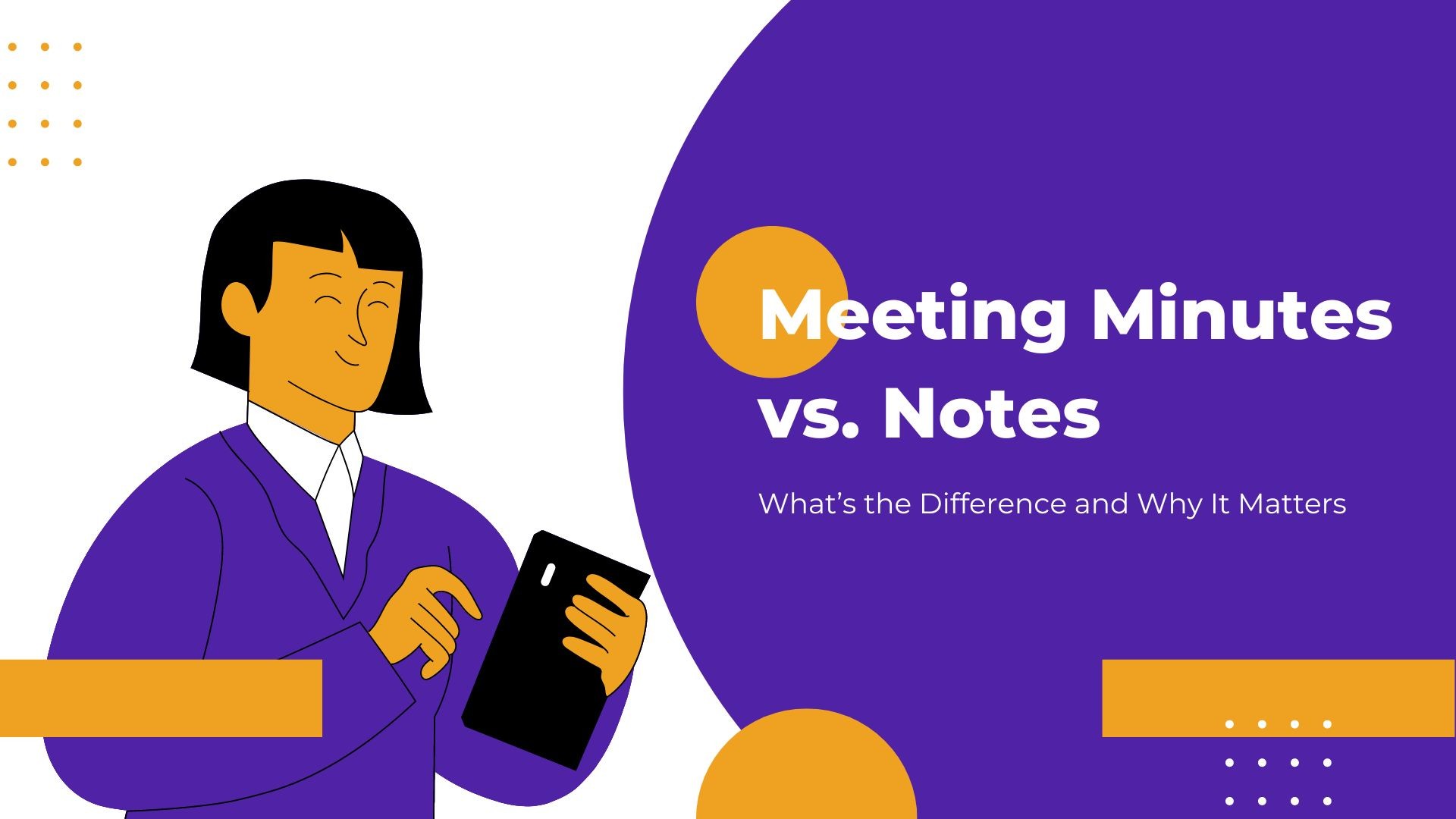In the realm of business and organizational meetings, both minutes and notes play crucial roles in documenting discussions and decisions. Understanding the differences between these two types of records can help you choose the right method for your needs and ensure effective communication and follow-up actions. This blog will explore the distinctions between meeting minutes and notes, their respective benefits, and how to use them effectively.
What Are Meeting Minutes?
Meeting minutes are formal, structured records of what was discussed and decided during a meeting. They are often required for legal or organizational purposes and provide a comprehensive, official record of the proceedings.
Key Features of Meeting Minutes:
- Formal Structure: Typically follow a set template including the date, time, location, attendees, agenda items, discussions, decisions made, action items, and future meeting dates.
- Detailed Documentation: Capture detailed information about discussions, including who said what and the rationale behind decisions.
- Legal and Organizational Requirements: Often necessary for compliance with regulatory standards, bylaws, or internal policies.
- Official Record: Serve as an official, approved record of the meeting, often reviewed and approved by participants.
Example Template for Meeting Minutes:
- Heading: Date, time, location, and type of meeting.
- Attendance: List of attendees and absentees.
- Call to Order: Who opened the meeting and any introductory remarks.
- Approval of Previous Minutes: Confirmation and approval of the minutes from the last meeting.
- Reports: Summaries of reports from various departments or committees.
- Old Business: Follow-up on unresolved issues from previous meetings.
- New Business: Discussion of new topics, proposals, and decisions.
- Action Items: Specific tasks assigned, responsible parties, and deadlines.
- Adjournment: Time the meeting concluded and any closing remarks.
What Are Meeting Notes?
Meeting notes are informal summaries of key points discussed during a meeting. They are more flexible than minutes and can be tailored to the needs of the note-taker or team.
Key Features of Meeting Notes:
- Informal Structure: Do not follow a strict format and can vary depending on the note-taker’s preferences and the meeting’s purpose.
- Concise Summaries: Focus on capturing the main points, key takeaways, and action items without going into extensive detail.
- Flexibility: Can be adapted to different types of meetings, such as brainstorming sessions, project updates, or one-on-one discussions.
- Personal Use: Often used for personal reference, to share with team members, or to create a quick recap for absent participants.
Example Template for Meeting Notes:
- Date and Time: When the meeting took place.
- Attendees: Names of those present.
- Main Points: Bullet points summarizing key topics discussed.
- Decisions Made: Brief notes on any decisions reached.
- Action Items: List of tasks assigned, with responsible individuals and deadlines.
- Next Steps: Any follow-up actions or meetings planned.
Choosing the Right Method
The choice between meeting minutes and notes depends on the purpose of the meeting and the needs of the organization.
When to Use Meeting Minutes:
- Formal Meetings: Such as board meetings, official committee meetings, or any gatherings requiring legal documentation.
- Regulatory Compliance: When it is necessary to maintain detailed records for compliance with laws or organizational bylaws.
- Official Records: When an approved, official record of the meeting is required.
When to Use Meeting Notes:
- Informal Meetings: Such as team check-ins, brainstorming sessions, or project updates where flexibility is needed.
- Personal Reference: For quick recaps, sharing key points with absent team members, or keeping track of personal tasks and follow-ups.
- Efficiency: When detailed documentation is not required, and a summary of key points will suffice.
Boost Your Productivity with VOMO AI
VOMO AI revolutionizes the way you manage meeting documentation by providing accurate and efficient transcription services. Its advanced features, including AI-powered transcription, speaker identification, and multi-language support, ensure that no important detail is missed. With VOMO AI, you can streamline your workflow, enhance communication, and save time on manual note-taking.
Practical Tips:
- Prepare for Meetings: Record and transcribe meetings using VOMO AI, allowing you to focus on active participation rather than taking notes.
- Utilize Ask AI: Use the Ask AI feature to generate summaries, extract key points, and translate transcripts into different languages.
- Review and Share: Quickly review and edit transcriptions for accuracy, and share them easily with team members for improved collaboration and follow-up.



